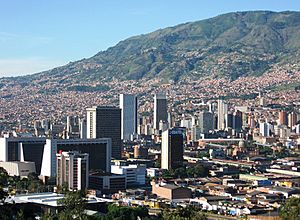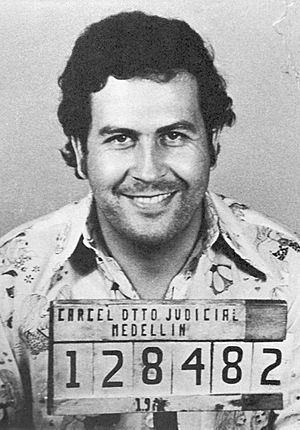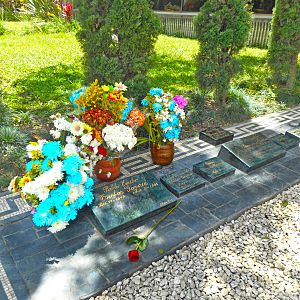Pablo Escobar facts for kids
Pablo Emilio Escobar Gaviria (December 1, 1949–December 2, 1993) was a Colombian drug lord. He is known as one of the "World's Greatest Outlaws". He is probably the richest and most successful criminal in world history. Some sources say that he was the second richest criminal ever, after Amado Carrillo Fuentes. In 1989, Forbes magazine said that Escobar was the seventh richest man in the world. The magazine said that he had about US $25 billion. In 1986, he entered Colombian politics with success. However, Escobar's political ambitions were thwarted by the Colombian and U.S. governments, who routinely pushed for his arrest.
Escobar's legacy remains controversial; while many denounce the heinous nature of his crimes, he was seen as a "Robin Hood-like" figure for many in Colombia, as he provided many amenities to the poor. His killing was mourned and his funeral attended by over 25,000 people. Additionally, his private estate, Hacienda Nápoles, has been transformed into a theme park. His life has also served as inspiration for or has been dramatized widely in film, television, and in music.
Contents
Early life

Pablo Emilio Escobar Gaviria was born on 1 December 1949 in Rionegro, Antioquia Department. He was the third of seven children and grew up in poverty, in the neighboring city of Medellin. His father was a small farmer and his mother was a teacher. Escobar left high school in 1966 just before his 17th birthday, before returning two years later with his cousin Gustavo Gaviria. At this time, the hard life on the streets of Medellin had polished them into gangster bullies in the eyes of teachers. The two dropped out of school after more than a year, but Escobar, who did not give up, briefly became autonomous in Latin America by forging high school diplomas. He then studied in college with the goal of becoming a criminal lawyer, a politician, and eventually the president, but had to give up because of lack of money.
Criminal career
In 1976, Escobar founded the Medellín Cartel and established the first smuggling routes from Peru, Bolivia and Ecuador, through Colombia and eventually into the United States. He quickly became one of the richest people in the world, but constantly battled rival cartels domestically and abroad, leading to massacres and the murders of police officers, judges, locals, and prominent politicians.
In the 1982 Colombian parliamentary election, Escobar was elected as an alternate member of the Chamber of Representatives as part of the Liberal Party. Through this, he was responsible for community projects such as the construction of houses and football fields, which gained him popularity among the locals of the towns that he frequented.
In 1991, Escobar surrendered to authorities, and was sentenced to five years' imprisonment on a host of charges, but struck a deal of no extradition with Colombian President César Gaviria, with the ability of being housed in his own, self-built prison, La Catedral. In 1992, Escobar escaped and went into hiding when authorities attempted to move him to a more standard holding facility, leading to a nationwide manhunt.
Death
In 1993, Escobar was killed in his hometown by Colombian National Police, a day after his 44th birthday.
Personal life
In March 1976, the 26-year-old Escobar married María Victoria Henao, who was 15. The relationship was discouraged by the Henao family, who considered Escobar socially inferior; the pair eloped. They had two children: Juan Pablo (now Sebastián Marroquín) and Manuela.
See also
 In Spanish: Pablo Escobar para niños
In Spanish: Pablo Escobar para niños



